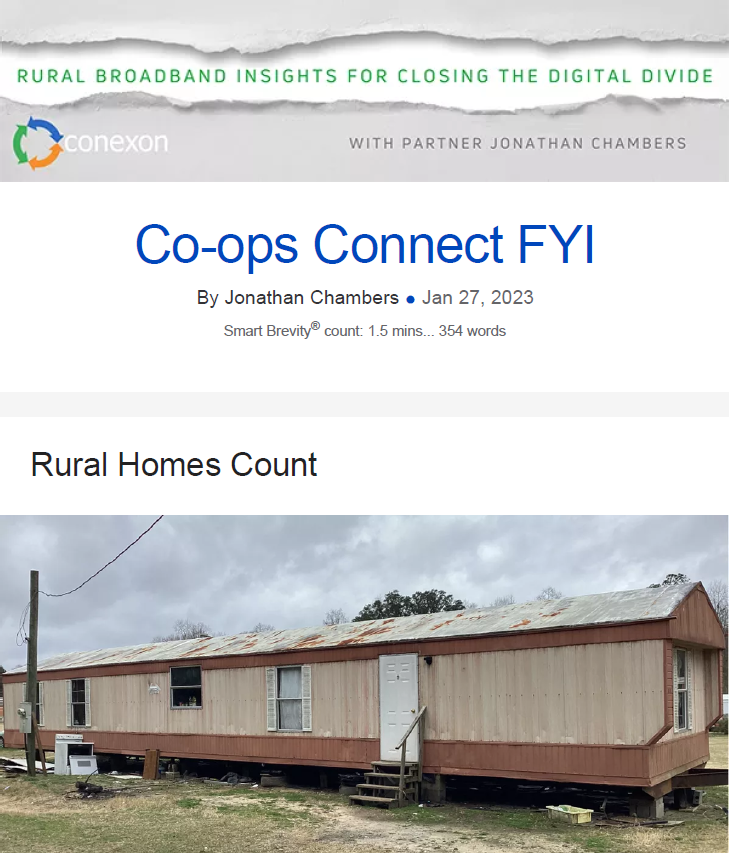Rural Homes Count
January 27, 2023
This is somebody’s home in southern Georgia.
It is occupied, provided with electricity by an electric cooperative, and now has fiber broadband available as part of a cooperative fiber project.
- This home is counted as a housing unit by the Census Bureau. Counted as a household.
- Counted as a location in the Rural Digital Opportunity Fund.
- Counted as a location in the FCC’s location fabric.
- NOT counted as a Broadband Serviceable Location in the National Broadband Map.
And just this week the FCC has questioned whether this home should be counted at all.
For background:
Within months after receiving our first RDOF check, Conexon had surpassed a milestone of having passed over 20% of the RDOF locations in the census blocks where we receive funds.
- As required by the federal government, we reported this milestone.
Why it matters:
It has taken the federal government nearly as long to review our Georgia data as it took us to build thousands of miles of fiber-optic networks in the state.
And now, the federal government has begun to question whether some of the locations in Georgia should count.
- Homes such as this one. Homes in trailer parks. Buildings on farms.
- All questioned, discounted, and dismissed.
- Determined to be unworthy of being counted as American locations that deserve broadband.
- Even in areas we have already built broadband.
The Big Picture
I have said it before: In the new broadband map, the FCC discounts rural businesses, trailer parks, farms, churches, schools, libraries, and more.
If you’re counting locations in rural America and you undercount farms and trailer homes and exclude small businesses, you’re missing the most underserved segments of the most underserved parts of the country.
Such an approach will distort the true picture of broadband availability in rural America and distort the funding allocation.
The bottom line:
We build fiber networks to rural America. Maybe the rural poor isn’t fashionable enough for the FCC.
These are people’s homes. They count.
